Laboratories of Change: Faculty Research in the Humanities (Part III)
From challenging notions of identity to re-imagining nature of research, humanists turn Academy on ear

At Syracuse, the confluence of science and the humanities has spawned myriad partnerships. Digital humanities, for one, is a vast academic enterprise, spearheaded by members of the College of Arts and Sciences (A&S) and Syracuse University Libraries. Data mining, multimedia publication, intellectual property rights, open-access materials and classroom technologies are not just evocative buzzwords; they are areas of rigorous, cutting-edge scholarship.
When not writing about video games, television or avant-garde film, Chris Hanson spends time in the Digital Scholarship Space (DSS) in Bird Library. “It is a lab that utilizes emerging technologies for teaching, research and scholarship,” says the associate professor of English in A&S. “As we increase the number of digital technologies in our lives and our workplaces, we read, experience, play and develop texts in formats that heretofore have been unimaginable.”
DSS joins a growing list of faculty-led initiatives that includes a digital atlas of Onondaga Lake and a critical study of fanfiction and digital writing. Many of these projects involve Bird Library, which Hanson affectionately calls the “laboratory of the humanities.” “Our library is the site of creative, experimental and richly collaborative inquiry,” he says. “We professors would be lost without it.”
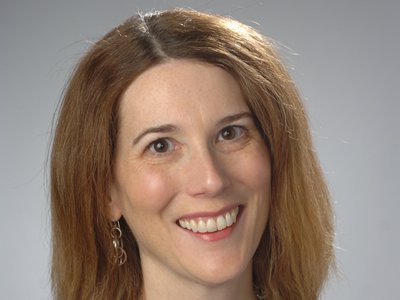
Amanda Eubanks Winkler, associate professor of music history and cultures in A&S, is co-creating a multimedia repository to understand and encourage the performance of late 17th-century adaptations of Shakespeare’s plays. Titled “Performing Restoration Shakespeare,” the $800,000 project involves Syracuse; the Folger Shakespeare Library in Washington, D.C.; the Shakespeare Birthplace Trust in Stratford-Upon-Avon, England; and Queen’s University Belfast in Northern Ireland. The purpose of the venture, she states, is to use the humanities to enrich and enliven knowledge of the past.
“These collaborations involve students and scholars from both sides of the Atlantic, participating in high-profile shows and events,” says Eubanks Winkler, adding that a workshop has taken place at Shakespeare’s Globe in London. “Our multimedia outreach work is rooted in digital methodologies, which have profoundly affected my research, teaching and knowledge dissemination.”
In addition to an active Twitter feed, “Performing Restoration Shakespeare” has a website and a YouTube channel. Documentaries that Eubanks Winkler and her collaborator Richard Schoch shot last fall at the Folger Library will soon be available for streaming. “This democratizes knowledge by allowing those who cannot attend a lecture or performance firsthand to experience it via an online platform,” she explains.
Opera—and staged drama, in general—lends itself to digital humanities. Sarah Fuchs Sampson, a colleague of Eubanks Winkler’s in A&S, works at the nexus of musical culture, performance and technological mediation. Sampson is writing a book about the role of audio and visual technologies in French operatic culture from 1870-1910. She is particularly interested in how the telephone, phonograph and cinema enhanced the notion of opera as a “spectacular distraction.”
“I draw on a rich collection of primary source documents, ranging from press reports to pedagogical manuals to sound recordings and films,” says Sampson, an assistant professor of music history and cultures. “These new technologies profoundly affected French opera audiences, singers and pedagogues for more than 50 years—a fertile time when the stage absorbed Wagnerian influences while retaining a sense of French individuality.”
Similarly, Krista Kennedy appreciates the link between technology and human self-expression. One of her research areas—also the basis for an upcoming book—looks at the efficacy of communication design on wearable hearing technologies, such as smart hearing aids. This is more than just analyzing promotional materials for patients and professional audiences, she asserts. “I draw on interface analysis and auto-ethnography to understand how onboard algorithms and hardware, as well as geolocative telemetry shape daily interactions in multiple hearing situations,” explains the associate professor of writing and rhetoric in A&S.
Kennedy’s book project is part of a growing canon of scholarship that considers how people use technology, such as smartwatches and fitness trackers, to produce communication. By upending long-held notions of authorial agency and autonomy, she contributes to the interdisciplinary subfields of rhetoric and information design. “My research focuses on theory and practices, relying mostly on recomposed, collaboratively produced texts,” says Kennedy, whose latest project involves the surveillance aspects of medical wearables. “The more we use digital communication devices, the more we should manage information in appropriate and meaningful ways.”
Ostensibly, collecting institutions, such as libraries and museums, are changing the way they do business. This, in turn, affects the research process—from finding and examining information to critically analyzing it. Some scholars speculate that the classroom, as we know it, may go the way of the buffalo. Or, more aptly, the card catalog.
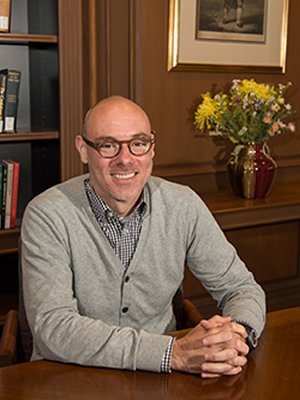
Patrick Williams, librarian for literature, rhetoric and digital humanities at Syracuse, thinks so. “Digital technologies present unique opportunities for institutions that are mostly analogue or rooted in history,” he says.
Williams represents a new breed of scholar with one foot in the past and the other in the future. Versed in contemporary literature, digital humanities and advancing technologies of reading and writing, he is a prized consultant to many departments and programs on campus, notably the Department of English and the Department of Writing Studies, Rhetoric and Composition, both of which are in A&S, and the Department of Communication and Rhetorical Studies in VPA.
Williams also collaborates with the staff of the Special Collections Research Center (SCRC), which collects, preserves and teaches with rare books, manuscripts and other primary source materials. Located on the sixth floor of Bird Library, SCRC houses everything from cuneiform tablets to born digital media. The center also engages with the campus community through exhibitions; lectures; mini-seminars; and a new faculty fellows program, enabling students to handle, analyze and interpret SCRC materials.
Lucy Mulroney, senior director of SCRC, originally came to Syracuse to work in the collections. “My entry point was the reading room, as a researcher looking for traces, clues, materials that might provide insight,” she says.
Mulroney's research into SCRC’s Grove Press Records, a pioneer of U.S. avant-garde publishing, helped her with a project she was doing on artist Andy Warhol, but it also opened doors to other opportunities. “The collections at Syracuse are truly inspiring. Through them we see and appreciate the complexities of human thought and creativity," Mulroney opines. "The work that happens in the archive is so much more than it may seem from the outside. The decisions we make as we grow, organize, preserve and digitize our collections activate new areas of scholarship. In turn, our exhibitions and outreach programs unlock fresh, multidisciplinary meanings for historical texts and artifacts. Now is the time to transform undergraduate and graduate pedagogy through the utilization of primary materials."
Williams concurs with Mulroney, and is excited to see Syracuse assert itself this way on the national stage. No doubt that his work with the Humanities and Technology Camp (THATCamp) is a factor. Described as a user-generated “unconference,” THATCamp brings together humanists and technologists of all skill levels to work together on projects proposed on the spot. Already, the former graphic designer has co-organized two such camps at Syracuse.
“I see how eager our graduate students are to collaborate with other people—not just at Syracuse, but at other institutions,” Williams says. “THATCamp draws on local expertise and informal experimentation to bring people with related interests together. For instance, one of last year’s sessions at Syracuse [called ‘Making/Breaking Circuits’] got writers, historians, social scientists, musicologists, librarians and others to consider the pedagogical affordances of simple, electronic circuits. There are no presentations—all participants are expected to talk and work with one another in every session.”
Like Williams, David Seaman believes technology is changing the way we relate to libraries—and the humanities, in general. “I see our ability to partner with faculty and with [Syracuse’s] Information Technology Services on new, cutting-edge services in 21st-century research, discovery and teaching to be central to our mission,” says Seaman, dean of libraries and University Librarian. “DSS and THATCamp are indicative of how the library is aligned with the ambitions of the University. It is an exciting time to be here.”
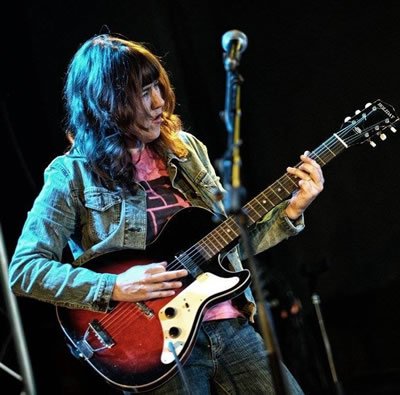
So say members of the Department of Physics. When they helped detect gravitational waves in 2015, the news reverberated throughout the global community. The discovery prompted Anna Coogan to write and record “The Lonely Cry of Space and Time,” the title track from her 2017 album. The Ithaca-based musician describes the song as a rumination on the “beauty and forces that are still powerful in this world, while shining a light into the darkness.”
“What interests me about gravitational waves is not so much the physics, but the human-ness of the discovery,” says Coogan, a former fishery biologist whose cousin is Duncan Brown, the Charles Brightman Endowed Professor of Physics, who co-directs Syracuse’s Gravitational-Wave Research Group in A&S and belongs to the Laser Interferometer Gravitational-Wave Observatory (LIGO) Scientific Collaboration. “It is a very uneasy record, and these are uneasy times. I am amazed that, in a sea of unabatingly terrible news, you have this group of people who gets up every morning to study the dawn of time.”
That Coogan took nearly every word of her song from LIGO’s press conference announcing the discovery is a point of pride. “I think we’re all struggling to put order into a chaotic world and universe,” she says, regarding the role of interdisciplinary scholarship. “To understand our relationship with one another and with the planet, we have to be willing to take risks, write bad songs and do experiments that fail. We have to talk, collaborate and create every day.”
The humanities can—and should—contribute to these kinds of discoveries, says MIT professor Alan Lightman. “We are not after homogenizing the disciplines, but, instead, finding overlaps and problems where different disciplines can contribute something,” he says. “Artistic creations that involve both the sciences and the humanities, such as Tom Stoppard’s play ‘Arcadia’ and Thomas Pynchon’s novel ‘Gravity’s Rainbow,’ are just as relevant as courses on energy consumption or bio-engineering.”
Such synergy permeates the health humanities, which brings texts, theories and methodologies of the humanities and social sciences to bear on the study of health care and on health care practice and education. Rebecca Garden, associate professor of bioethics and humanities at SUNY Upstate Medical University, attributes the field’s popularity, in part, to a growing focus on basic science and clinical practice. Her goal is to help scientists, clinicians and policymakers understand the social and cultural factors that contribute to health, illness and disability.
“Health is a complex social and cultural issue, and we need to draw on other disciplines and frameworks to practice really effective and empathic care,” says Garden, who studies bioethics and disability ethics. “First-person narratives, literary texts, videos and films, and blogs are ways of representing the experiences of people seeking health care in their social and cultural contexts. The humanities provide critical models for analyzing, interpreting and solving ethical dilemmas in health and health care.”
Garden is in charge of the Consortium for Culture and Medicine (CCM), involving Syracuse, SUNY Upstate and Le Moyne College. Since its establishment in 1978, CCM has explored the cultural, ethical, social and psychological dimensions of medicine and health. CCM also supports inter-professional community workshops, whose topics deal with a range of issues—from disability rights and deaf culture, to refugee health, to neighborhood violence and trauma.
Garden works closely with Maureen Thompson G’83, G’90, associate professor and director of public health, food studies and nutrition in Syracuse’s Falk College. Amid emails, both talk up Falk’s popular B.S. degree program in public health, spanning the natural sciences, statistics, communication, the social sciences and the humanities. “Each student completes more than 500 hours of important service work while gaining valuable hands-on experience,” says Thompson, adding that the degree program collaborates with over 120 legal and regional public health agencies and nonprofits. “Some of these partners, such as the Everson Museum of Art, relate art to health and healing.”
Thompson says that, in addition to the public health program, the University offers specific courses in the health humanities. One of them is “Medical Ethics” (PHI 398), developed by Samuel Gorovitz, professor of philosophy and former dean of A&S.
Recently recognized by an Honorary Doctor of Science degree from SUNY for his contributions to medical science, Gorovitz is the co-editor and co-author of “Triple Triumph: Three Women in Medicine” (Syracuse Unbound, 2017) with A&S Dean Emerita Cathryn Newton. The book provides insightful portraits of women trailblazers at SUNY Upstate, including Sharon Brangman ’77, a pioneer in the study of ethno-geriatrics. The portraits are followed by a sustained analytical essay exploring the structural barriers to equal opportunity and proposing correctives. A free PDF version has been downloaded more than 3,200 times all over the world, and the paper edition has already had a second printing.
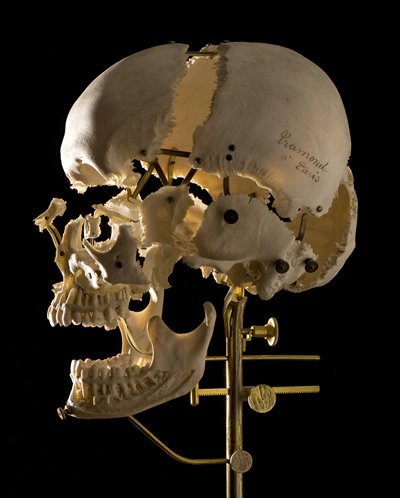
Newton and Gorovitz exemplify the values of interdisciplinary study. Witness an exhibition they recently facilitated at Syracuse called “Hidden Beauty: Exploring the Aesthetics of Medical Science.” Presented by the Syracuse University Art Galleries, “Hidden Beauty” featured 50 photographic images captured at the microscopic level by colleagues of theirs at Johns Hopkins University. “This collaborative project dissolved the boundaries between art and science, and enlarged the viewers’ capacity to understand patterns as markers of pathology, as structures of neurology, and as images of great aesthetic power,” Gorovitz says.
Jeffrey Hoone, executive director of the Coalition of Museum and Art Centers (CMAC), applauds these kinds of intersections, saying they provide a “window into the soul of a society.” “Artists, at their best, illuminate our life and times, and give us the courage to ask the most difficult questions and the freedom to enjoy the invention of response,” says the award-winning photographer. “Feed the arts, and you create a healthy society.”
Likewise, photographer Shane Lavalette credits the humanities for helping people understand one another. He is particularly excited about the burgeoning STEAM movement, which embeds arts education and critical thinking into a STEM agenda. “I think STEAM is one way we can increase the visibility and perceived value of the humanities,” says Lavalette, director of Light Work, a Syracuse-based, artist-run photography nonprofit. “Rewarding humanities scholarship certainly is a key measure in promoting innovation and valuable research at the institutional level. The value of this kind of work is immeasurable—academically, culturally, socially and economically.”
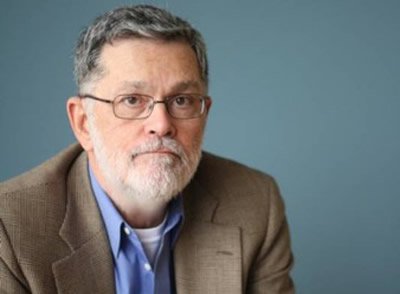
Historian Geoffrey C. Ward has his own theories about the humanities. Born into an academic family (his father was dean of The College at The University of Chicago), he has witnessed the false silos that can form between members of the Ivory Tower and the lay public—and even among professors, themselves. “I’ve always found this hostility kind of ridiculous,” says Ward, speaking by phone from his office in New York City. “It’s a war that needn’t be fought and does no good for either side.”
Ward, who has worked with filmmaker Ken Burns since 1984, thinks scholars of the humanities can learn a lot from their scientific counterparts—starting with the difference between an “airy argument and a substantive one,” to put it starkly. “It’s very easy to write dreamy stuff,” says Ward, the author of 19 books and numerous documentaries, including “The War,” “The Civil War,” “Baseball” and “Jazz.” “Scientists, however, have to produce evidence. Some of the best scientists are usually quite modest about what their evidence shows. … At the same time, scientists can learn from us [humanists] about the uses of inexactitudes. It’s okay to dream once in a while.”
Historical writing is Ward’s raison d'être, and, if he has gleaned anything from his travels, including living in India, it is the pervasiveness of human struggle. Those who turn their struggles into success, he believes, are a testament to the human spirit. “I think the secret to good writing is the realization that nobody knows, in any given moment, what is going to happen next,” Ward says. “The weakness of a lot of historical writing comes from people who see themselves as superior [to their subject matter] because they know how things turn out. Therefore, the people they write about seem quaint. There was nothing quaint about the Allied soldiers storming the beaches of Normandy on D-Day. They didn’t know if they would get off the beach alive or not.”
Another theme in Ward’s work is the “persistence of race”—which, in conjunction with ethnicity, gender and class, underscores a good deal of Syracuse research.
Take the curious case of Mĩcere Gĩthae Mũgo, a retired African American studies (AAS) professor who studies orature as a form of resistance art. The Kenyan-born scholar began her career at the University of Nairobi, teaching literature and serving as Africa’s first female academic dean. An abortive coup in 1982 forced her, then a single mother of two young girls, to flee the country. She eventually made her way to Syracuse via the University of Zimbabwe, where she was a political refugee.
Despite her calm reserve, Mũgo is an unswerving activist. She has teamed up with Herb Ruffin, associate professor and chair of AAS, to edit “Illuminations on Chinua Achebe: The Art of Resistance” (African World Press, 2017). Marking the 50th anniversary of Achebe’s “Arrow of God,” this collection of essays offers insightful commentaries about the late novelist, who famously explored Nigerian history through fiction.
“The illuminations emanate from a rainbow of intellectual heritages representing the arts, humanities and social sciences—a testament to the fact that Achebe linked creativity to the totality of lived reality,” Mũgo says. “‘Arrow of God’ is still relevant today because it speaks to all situations where leadership alienates itself from people, becoming preoccupied with the contestation for power and control rather than the plight of collective society. Similarly, it addresses global issues such as empire building, domination and subjugation of the powerless, cultural imposition and political leadership power struggles.”
Mũgo explains that, throughout history, Western empire builders have developed racist theories to justify their “negation, demonization and dehumanization” of black people and cultures. Artists have responded to this onslaught by claiming their own voice and telling alternative stories. It is for this reason that orature and literature have acquired a utilitarian reputation. “It is not enough to create art for art’s sake, even though aesthetically appealing works are valued. Moreover, resistance art should not just be a reaction to Western cultural imposition,” Mũgo says. “This kind of art is a space for naming, self-naming and self-definition—self-representation that envisions an alternative world in which the humanity of all people, not just blacks, is recognized.”
Ruffin suggests that “The Art of Resistance” is a crowning achievement—not just for him and Mũgo, but also for AAS and the campus-wide Africa Initiative. He points out that “resistance” means different things to different people, particularly outside of AAS. “In black studies, ‘resistance’ usually refers to asserting oneself or refusing to be pushed over. It comes up a lot in conversations about slavery and colonialism,” says Ruffin, an expert on race and ethnic studies. “Someone in women’s and gender studies, Jewish studies or Latino-Latin American studies probably has a slightly different take on it—looking at ‘resistance’ in terms of new or unfamiliar ideas, progressive change or hard truths.”
If one thing binds humanists together, it is the concept of human dignity. “Issues of morality, equality and dignity are just as important today as they were during the various empowerment movements of the ’60s and ’70s,” Ruffin says. “People have an inherent desire to belong, to be part of something greater than themselves.”
Scenes of racialization pervade the work of Stephanie Fetta, assistant professor of Spanish in the Department of Languages, Literatures and Linguistics (LLL). Growing up in Southern California, she may have been too young to understand the nuances of the Chicano civil rights movement, but her Chicana mother and extended family instilled in her sturdy notions of justice and equality, while sparking an interest in intersectional racialization. The result is “Shaming into Brown: Somatic Transactions in Latina/o Literature” (The Ohio State University Press, 2018), Fetta's take on the social practice of shaming Latina/os into seeing themselves as “brown” and thus socially marginalized. Considerable emphasis is on the soma—what she calls the “intelligent, communicative, feeling body that physically responds to the world in a public way.”
“Research shows that we have an emotional and physical response of pain to shame,” says Fetta, whose book incorporates research data from the social sciences, neuroscience, critical theory and critical race theory. “Authors use this response, expressed through the soma, to drive structure, form, character development and style. I argue that the soma is a missing lens in the study of Latino literature. … [Shame] reveals what is personal to us, while, at the same time, showing us the importance of our connections with others—and what happens when these relationships are threatened. Shame is a universal condition."
